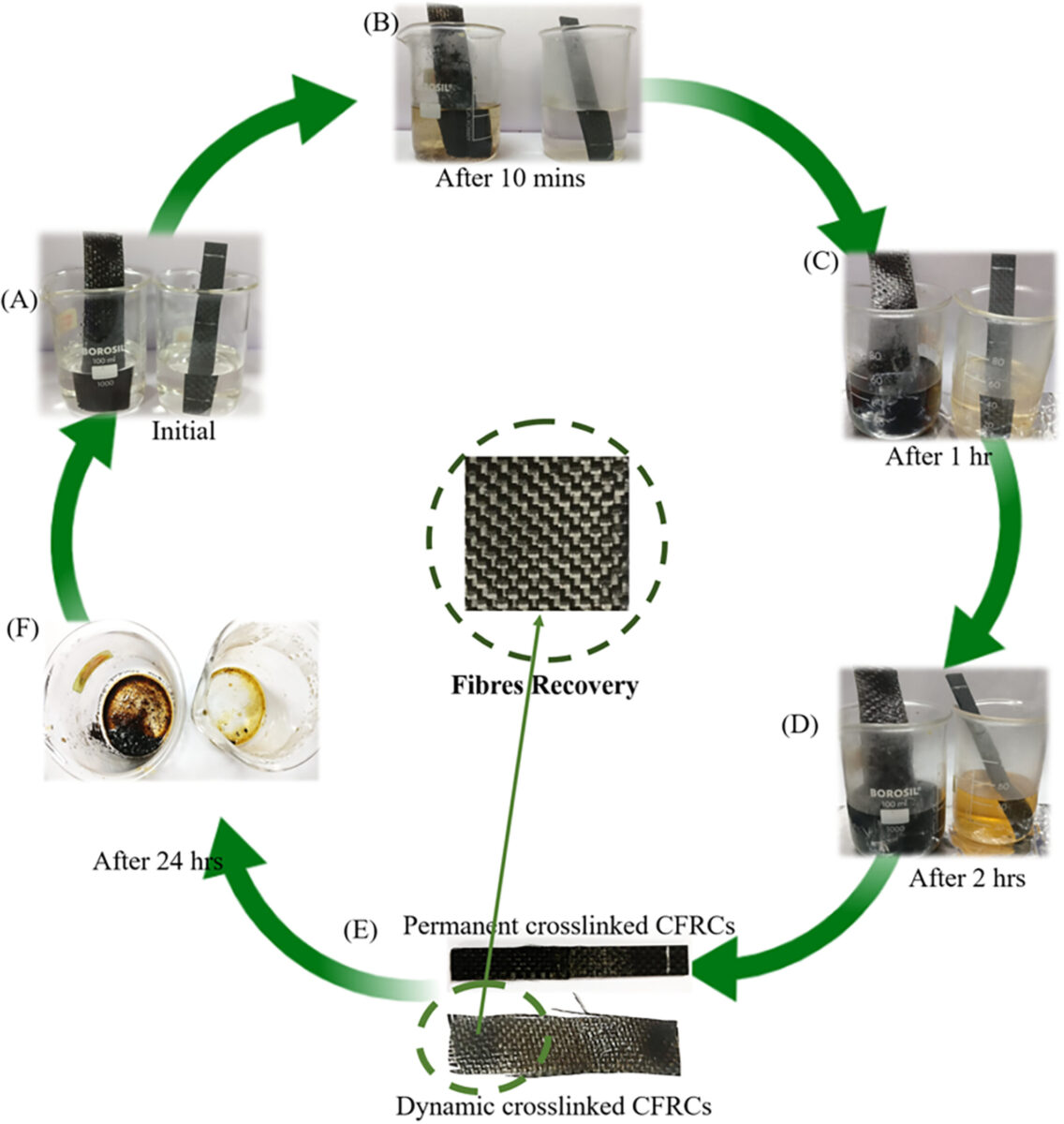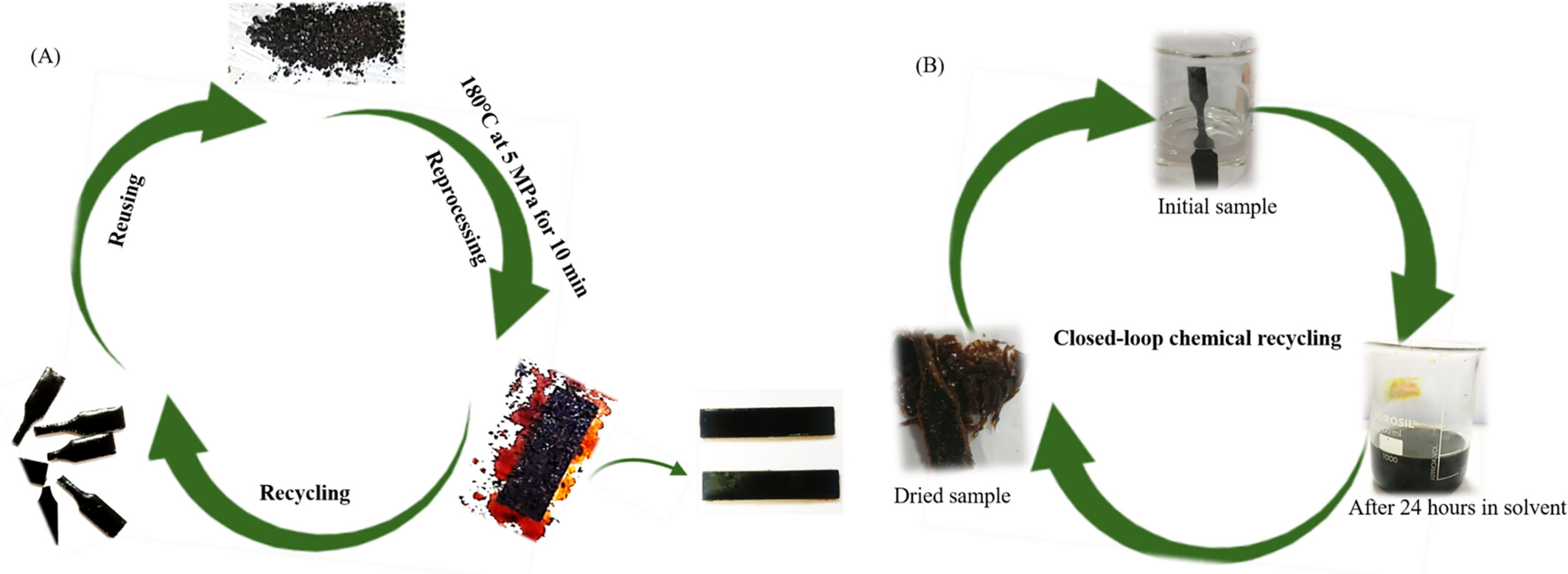Sustainable Closed-Loop Circularity Unveiled in Epoxy Vitrimers with Covalent Adaptable Networks

The quest for advanced epoxy formulations has led to a groundbreaking development—fast-curing epoxies that achieve full curing within a mere two hours. This achievement is attributed to the integration of Vitrimer chemistries, ushering in a new era of rapid turnaround times for epoxy applications.
At the heart of this innovation lies a dynamic curing agent, a bio-based Schiff motif, featuring cinnamaldehyde and mussel-inspired dopamine. This unique agent facilitates imine exchange during the curing process, ensuring the integrity of the network—a pivotal factor for achieving superior structural properties in epoxy-based components.
The resulting epoxy vitrimers exhibit an array of exceptional characteristics. With a tensile strength of 68 MPa and an impressively high glass transition temperature (Tg) of 128°C, these epoxies stand out in terms of both strength and thermal stability. Notably, they demonstrate fast stress relaxation, boasting a relaxation time of 15.2 seconds at 180°C, coupled with an activation energy of 105 kJ/mol.

(A) A schematic illustration of the re-processability, recyclability, malleability and re-usability of SB samples; (B) a qualitative study demonstrating solubility of epoxy vitrimers at 120°C in NMP solution at different time intervals.
What sets these epoxy vitrimers apart is their re-processability and reusability, attributes rarely found in traditional epoxy formulations. The dynamic exchange reactions inherent in the bio-based Schiff motif pave the way for closed-loop circularity in plastics, aligning with sustainable practices.
Moreover, these innovative epoxies showcase a self-healing property triggered by the exchangeable bonds. Surface conductivity measurements reveal the restoration of conducting pathways post self-healing, underscoring the potential for extending the lifespan of epoxy-based substrates.
In a further stride towards sustainability, the epoxies cured using the Schiff-based motif dissolve in a specific solvent, allowing for recovery and repurposing. This feature enhances the circularity of the epoxy, aligning with the growing emphasis on eco-friendly and recyclable materials in the plastics engineering landscape.
The fusion of Vitrimer chemistries and bio-based curing agents has given rise to a transformative epoxy formulation. Its fast curing, coupled with outstanding mechanical properties and innovative features like re-processability and self-healing, positions these epoxies as trailblazers in the realm of plastics engineering, opening up diverse applications across industries.
You can learn more about this topic in the article “Covalent adaptable network offers “sustainable” closed-loop circularity in epoxy vitrimers,” by Sandeep Tripathi, Supriya H, Suryasarathi Bose, appearing in the December 2023 issue of SPE Polymers.
